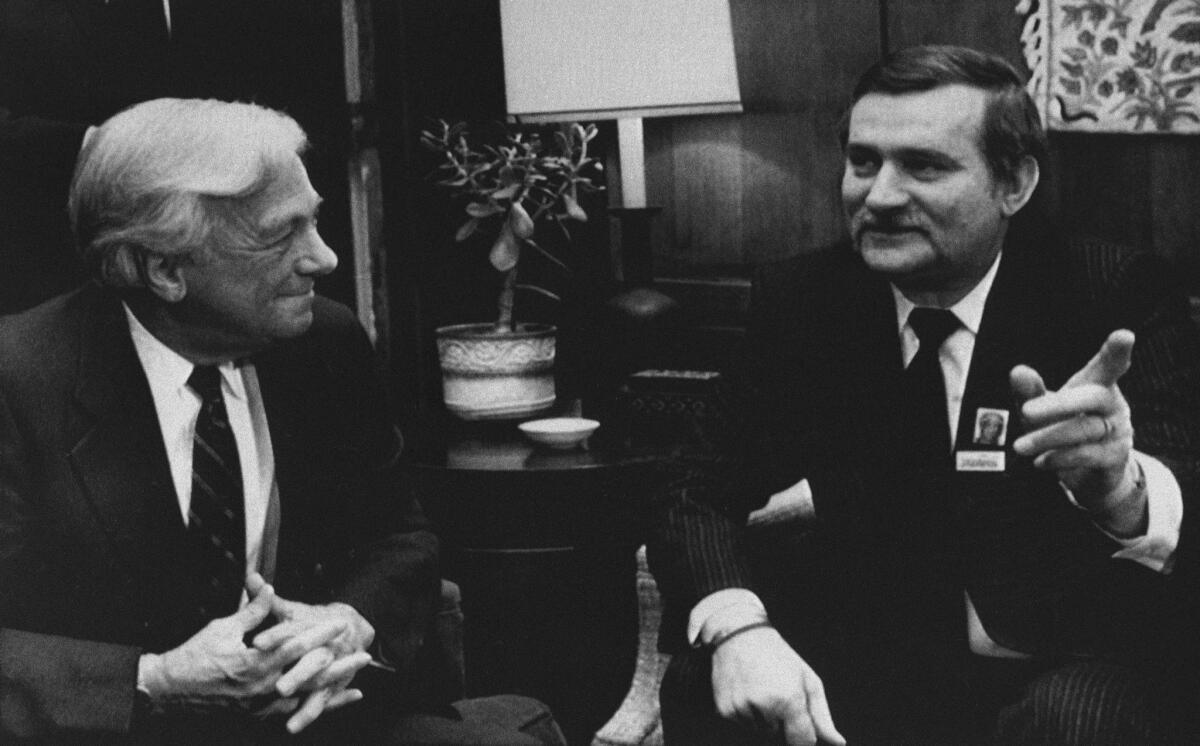How the lauded John C. Whitehead (RIP) helped crater the Getty’s endowment

- Share via
Former Goldman Sachs Co-Chairman John C. Whitehead has been getting a very adulatory sendoff in the obituary columns since his death on Saturday at the age of 92. The obits mention his “moral compass,” his leadership of numerous philanthropies, his role in helping lower Manhattan recover from the 9/11 attack, his valorous service during World War II.
These encomiums certainly are deserved. Yet the obits don’t mention an episode that perhaps should be better remembered here on the West Coast. It concerns Whitehead’s role in a hugely risky financial maneuver that cost the J. Paul Getty Trust, parent of the Getty Center, $400 million during a bull market that should have garnered the trust a sizable gain instead. The Getty may still be feeling the consequences of the botched investment some two decades later.
We unearthed the details for a front-page story in 1997. As an example of how Wall Street hubris can cost a client dearly, it surely should be part of any three-dimensional review of Whitehead’s career.
The story involves management of the immense Getty Trust in 1994-1996, which included a year in which the stock market gained a very healthy 25%. The Getty Trust, however, had bet that the market would fall. With every point gained by market indices, the Getty lost millions. By mid-1996, when the trust finally closed the books on its misbegotten hedging strategy, the cost was a staggering $397.2 million--a big bite out of an endowment that had reached $4.4 billion in fiscal 1996 and, as we reported in 1997, “the costliest single investment the Getty has ever made.”
The hedge, technically known as a “collar” and cobbled together from the buying of put options and selling of call options on the Standard & Poor’s 500 stock index, was Whitehead’s idea. (Puts are the right to sell a commodity at a given price; calls are the right to buy at a given price.) Then a member of the Getty’s board and chairman of its investment committee, he sold his fellow trustees on the maneuver by depicting it as the essence of “caution and conservatism.”
Whitehead’s Wall Street career and his expertise in these intricate derivatives deals bolstered his case. The idea was to protect the trust from a stock market downturn he felt was in the offing.
The Getty was nervous about its endowment, which was based on a $1.2-billion bequest in 1976 from oilman J. Paul Getty. The trust didn’t have the flexibility of endowed institutions such as universities, which could raise tuition if they needed money. It was in the midst of planning and construction of the Getty Center, which originally been budgeted at $360 million and was already on the way to costing well more than twice as much.
But experts later told us the hedge was ineptly designed. It was too aggressive, too pessimistic, and too rigid -- at one point, when the trustees pondered unwinding the collar early to cut its losses, they learned that shutting it down prematurely would cost even more than letting it run out. And it was far too big for the Getty’s stock exposure.
When we interviewed him in the aftermath, Whitehead was rueful about the hedge’s consequences but not apologetic. “As things turned out,” he told us, “that was the wrong thing to do.”
Keep up to date with the Economy Hub. Follow @hiltzikm on Twitter, see our Facebook page, or email mhiltzik@latimes.com.
More to Read
Inside the business of entertainment
The Wide Shot brings you news, analysis and insights on everything from streaming wars to production — and what it all means for the future.
You may occasionally receive promotional content from the Los Angeles Times.











